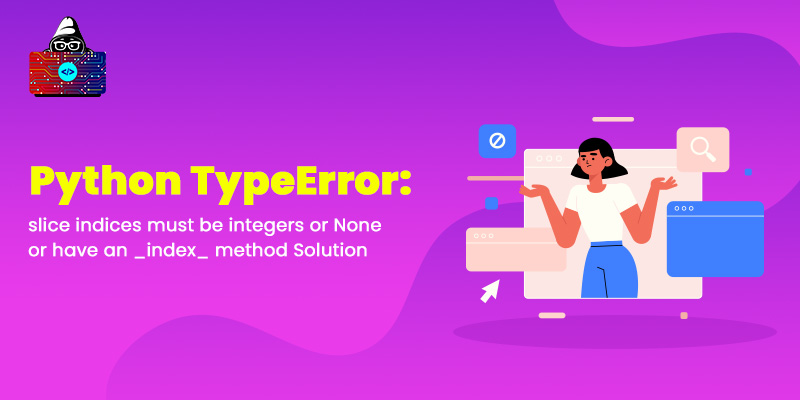I. Introduction
In the vast realm of programming, understanding slice indices is akin to wielding a powerful tool. These indices play a crucial role in manipulating sequences, be it arrays, strings, or lists. But what sets the stage for our exploration is the notion that slice indices must be integers.
II. What are Slice Indices?
Slice indices, in essence, determine a subset of elements within a sequence. They serve as the boundaries that define which elements to include or exclude. It’s imperative to grasp the difference between integer and non-integer slice indices.
III. The Significance of Integer Slice Indices
Why the insistence on integers? Integer slice indices provide clarity and precision. When we express a range, using integers ensures a well-defined set of elements, contributing to the stability and predictability of the code.
IV. Common Errors: Non-Integer Slice Indices
Deviation from integer indices can lead to confusion and errors. Imagine trying to slice a list using a floating-point number—it’s a recipe for disaster. When programming, precision is paramount, and that’s precisely why “slice indices must be integers.” Any deviation introduces ambiguity, jeopardizing the integrity of your code. Avoiding this pitfall is crucial for seamless execution and preventing runtime glitches. Remember, in the world of programming, clarity reigns supreme, and integer slice indices are the key to achieving it.
V. Best Practices for Using Slice Indices
To navigate the intricacies of slice indices, developers must adopt best practices. From understanding inclusive and exclusive ranges to leveraging step values, this section offers actionable tips for effective slice index usage. Emphasizing the importance of adhering to the fundamental rule that “slice indices must be integers” ensures a seamless and error-free coding experience. Incorporating these strategies enhances code readability and promotes efficient programming.
VI. Slice Indices in Different Programming Languages
Slice indices aren’t one-size-fits-all; they vary across programming languages. A comparison of approaches in Python, Java, and other languages sheds light on the nuanced nature of slice indices.
VII. Advanced Techniques with Slice Indices
For seasoned developers, slice indices unlock a realm of advanced techniques. Dive into real-world examples showcasing how mastering slice indices can elevate your programming skills.
VIII. Troubleshooting Slice Index Issues
Even the most adept programmers encounter challenges with slice indices. This section provides a troubleshooting guide, addressing common problems and offering solutions.
IX. The Impact of Slice Indices on Performance
Efficiency matters. Discover how strategic use of slice indices can impact program performance. Optimize your code by understanding the intricacies of memory allocation and processing speed.
X. Slice Indices in Data Structures
Slice indices extend their influence to various data structures. Explore practical applications in arrays, lists, and delve into the nuances of manipulating data structures using slice indices.
XI. Understanding Slice Indices in Multi-dimensional Arrays
Take a deep dive into the world of multi-dimensional arrays. Uncover the applications and challenges of using slice indices in complex data structures.
XII. Coding Exercise: Mastering Slice Indices
Theory meets practice in this hands-on coding exercise. Follow a step-by-step guide with explanations to solidify your understanding of slice indices. Remember, the key principle is that “slice indices must be integers.” By engaging in practical exercises, you not only grasp the theoretical concepts but also gain proficiency in applying them in real-world scenarios. This immersive learning experience fosters a deeper comprehension of slice indices and their integral role in programming.
XIII. Slice Indices and Memory Management
Memory is a precious resource. Learn how slice indices impact memory allocation and gain insights into efficient memory management strategies.
XIV. Future Trends in Slice Indices
As technology evolves, so does programming. Explore emerging trends and predictions for the future of slice indices. Stay ahead of the curve by anticipating developments in this crucial programming concept.
XV. Conclusion
In wrapping up our exploration, it’s evident that mastering slice indices is more than a skill—it’s a necessity. Whether you’re a novice or a seasoned developer, understanding why “slice indices must be integers” unlocks a world of programming possibilities. As you navigate the intricate dance of coding, let slice indices be your guide to precision and efficiency.

